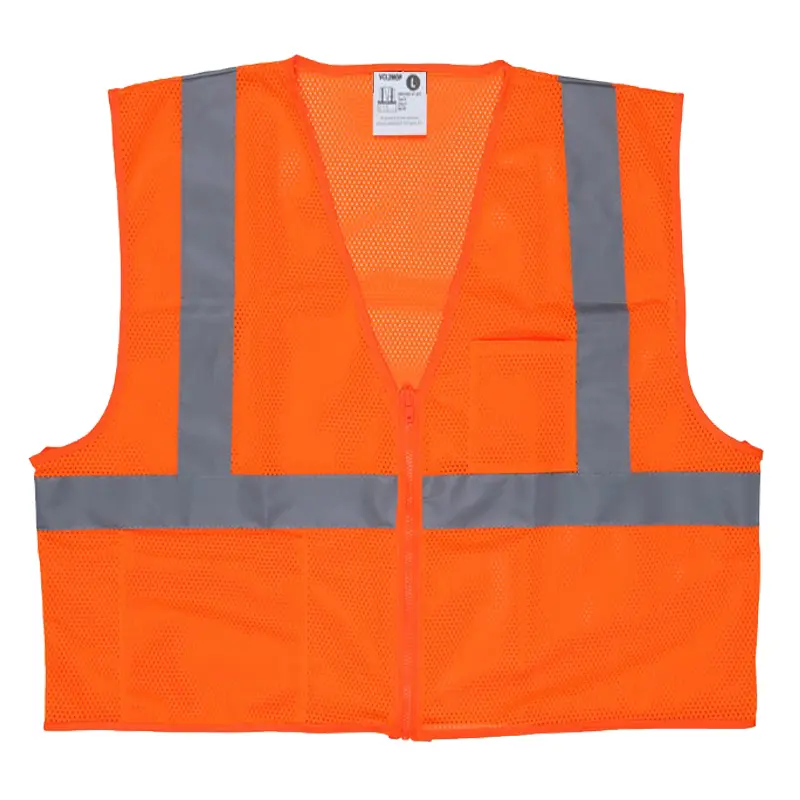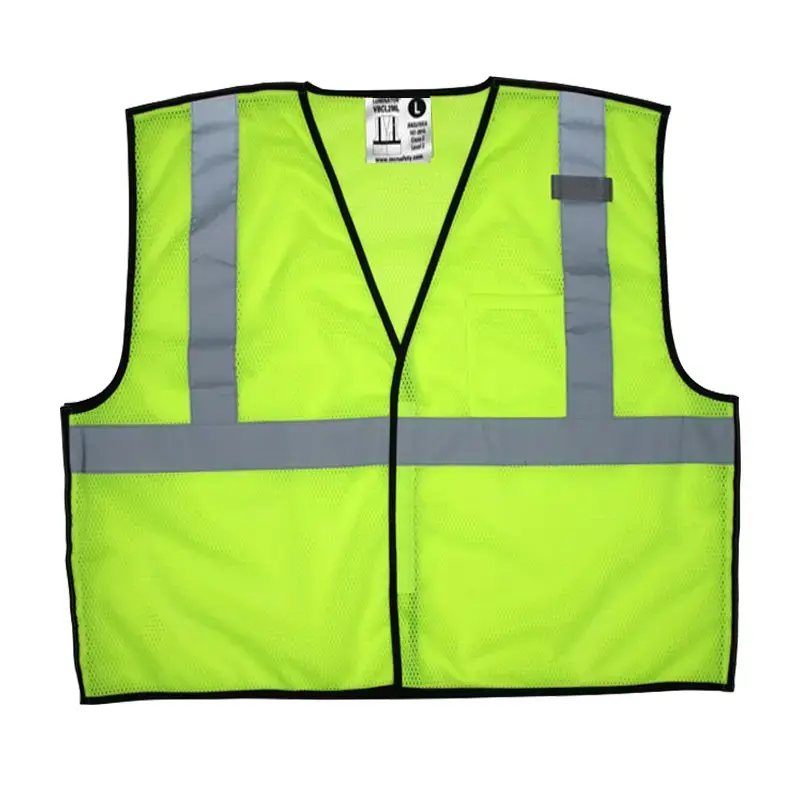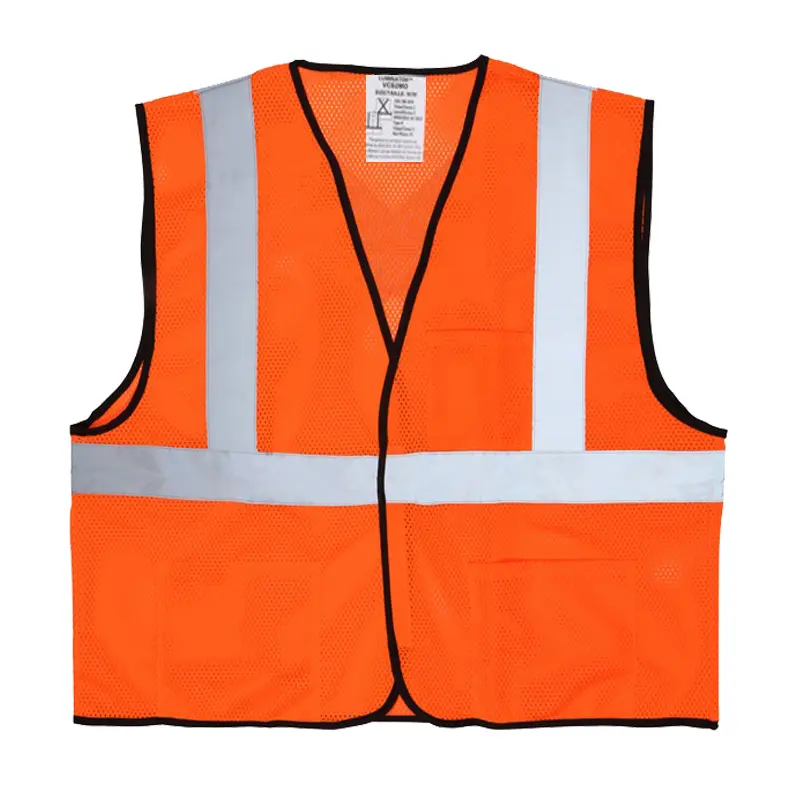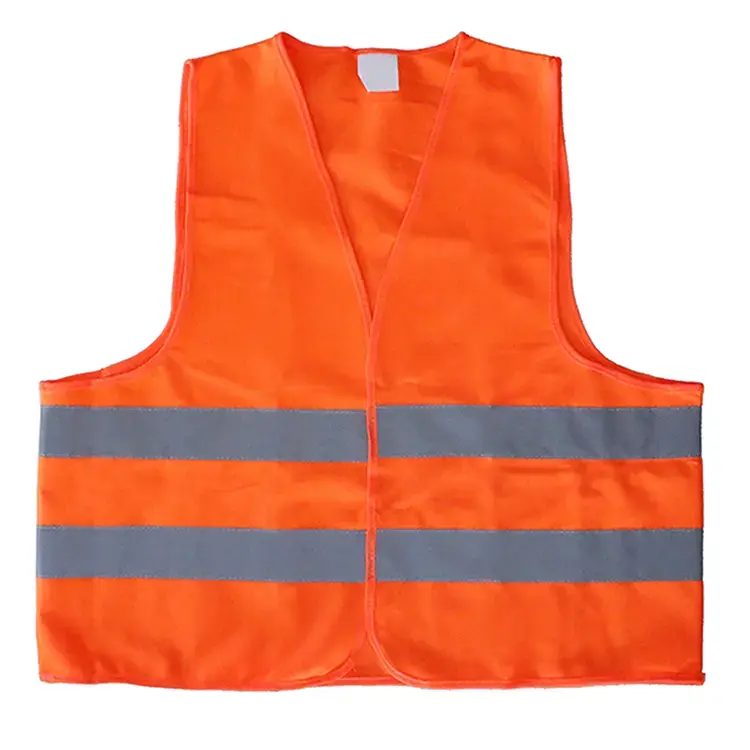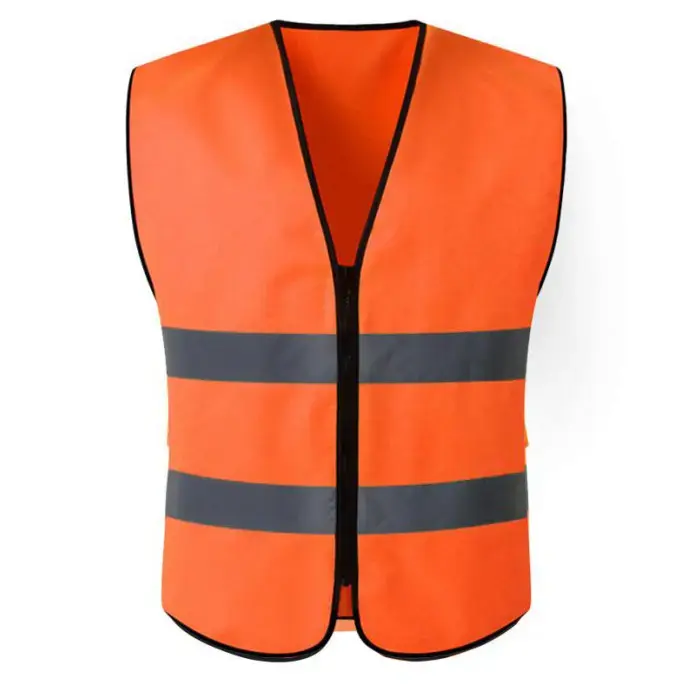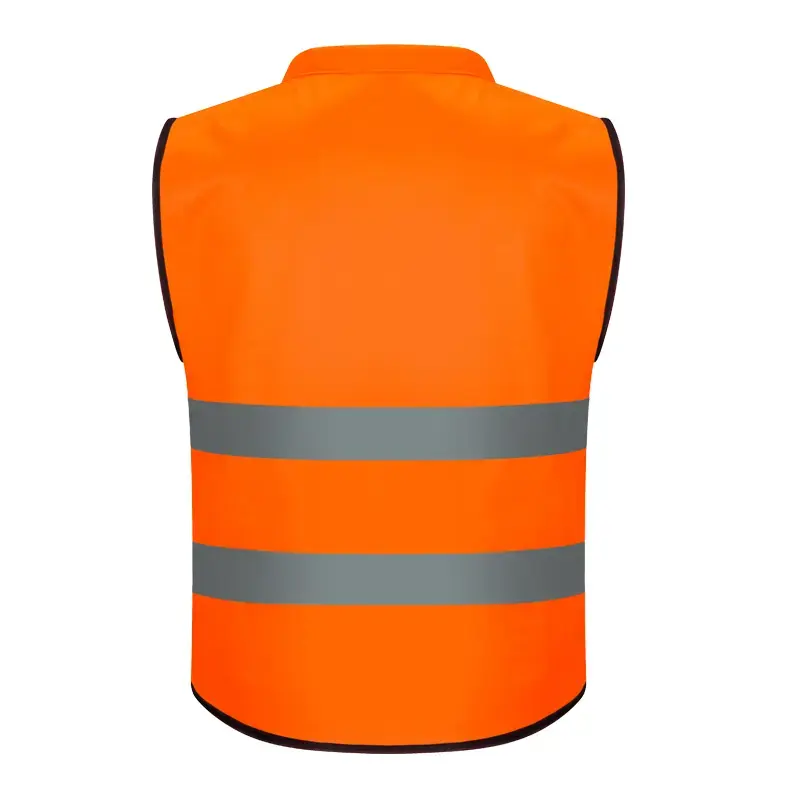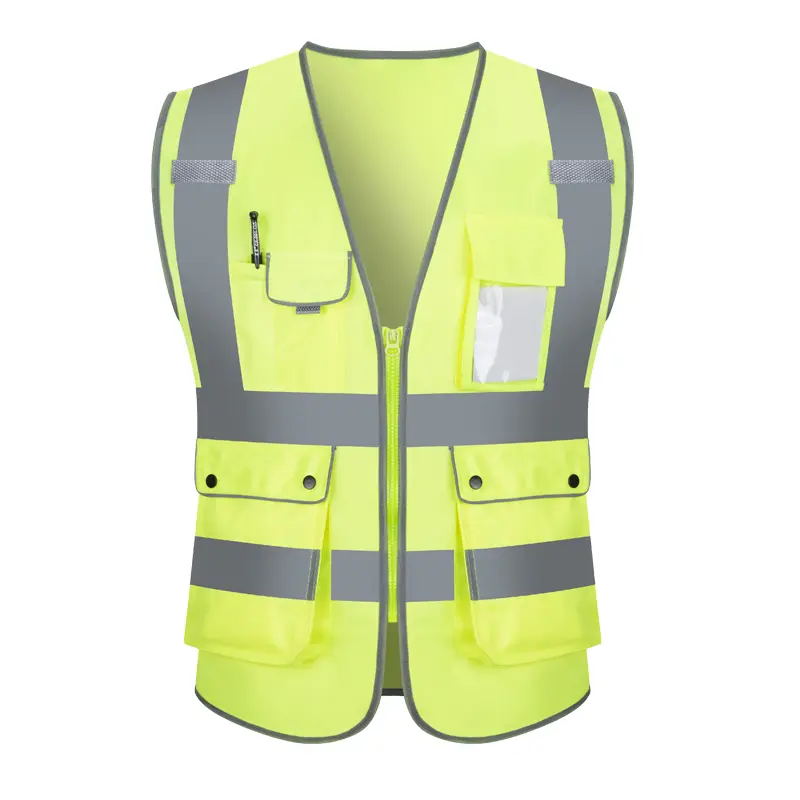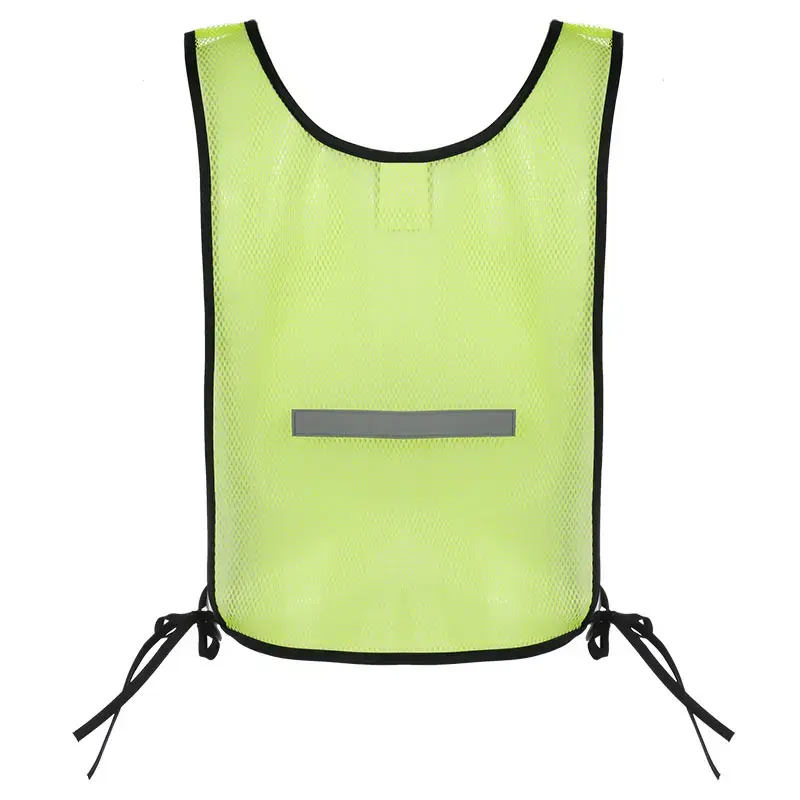ANSI/ISEA 107 Standard: Reflective Material Area Requirements for Reflective Safety Vests
In-depth analysis of ANSI/ISEA 107 standard: reflective material area requirements for Reflective Safety Vests
In the international market, reflective safety vests are widely used in many fields as a key safety protection product. As an important specification in the field of high-visibility warning clothing in the United States, the ANSI/ISEA 107 standard has important guiding significance for the design and production of reflective safety vests. Among them, the requirements for the area of reflective materials are an important part of the standard, which is directly related to the warning effect and safety of the vest. This article will deeply analyze the relevant requirements for the area of reflective materials in the ANSI/ISEA 107 standard to help readers fully understand this key indicator.
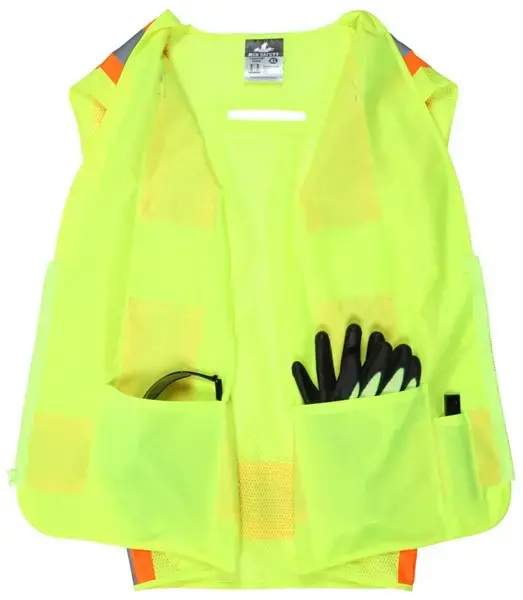
1. Introduction to ANSI/ISEA 107 Standard
The ANSI/ISEA 107 standard was jointly developed by the American National Standards Institute (ANSI) and the International Safety Equipment Association (ISEA). It aims to standardize the design, production and related requirements of high-visibility safety clothing and accessories to ensure the visibility and safety of workers in low-light and dangerous environments. The standard was first published in 1999 and has been revised and improved many times to adapt to the changing industry needs and technological advances.
2. Reflective material area requirements
According to the ANSI/ISEA 107 standard, different levels and types of high-visibility safety clothing have clear requirements for the area of reflective materials to ensure that they can provide sufficient visibility and warning effects in various environments.
(I) Classification by clothing level
Level 1 warning clothing: Suitable for general risk environments, such as parking lots, traffic maintenance and other scenes. The minimum use area of its reflective material is relatively small, but it still needs to meet certain visibility requirements to ensure the recognizability of workers in low light conditions.
Level 2 warning clothing: Mainly used for road maintenance workers and other personnel working in complex traffic environments. Compared with level 1 warning clothing, its reflective material area requirements are higher to provide stronger warning effects and longer visual distances. Specifically, the ANSI/ISEA 107 standard stipulates that the reflective material area of Level 2 warning clothing must reach a certain level, for example, the reflective tape on the torso must meet the corresponding width and continuity requirements, and the total reflective material area of the entire clothing must not be less than the specified minimum value.
Level 3 warning clothing: Suitable for higher-level dangerous environments, such as highway maintenance, construction sites, etc. Level 3 warning clothing has the most stringent requirements on the area of reflective materials, and its reflective effect is stronger and the visible distance is farther, which can provide higher safety protection for workers. According to this standard, the reflective material area of Level 3 warning clothing needs to be further increased to ensure that workers can be discovered in time from all angles in complex working environments.
(II) Classification by reflective material type
Wide-width reflective material: Usually used on the torso of clothing, providing a large area of reflective effect. The ANSI/ISEA 107 standard clearly stipulates the minimum width and continuity of wide-width reflective materials to ensure that they can produce good reflective effects at different angles.
Narrow reflective materials: commonly used in sleeves, pants and other parts of clothing, to play an auxiliary warning role. For narrow reflective materials, the standard stipulates its minimum width and spacing requirements to ensure that it can form an effective reflective pattern in the overall clothing and enhance the visibility of workers.
3. Performance requirements of reflective materials
In addition to the area requirements, the ANSI/ISEA 107 standard also puts forward strict requirements on the performance of reflective materials. These requirements cover the reflective intensity, durability, color and other aspects of reflective materials to ensure that they can maintain a good warning effect during long-term use.
(I) Reflective intensity
The reflective intensity of reflective materials is one of the important indicators to measure their performance. According to the standard, the reflective intensity of reflective materials at different viewing angles and incident angles must reach a certain minimum limit. These limits are determined based on the needs for visibility and warning effects in actual application scenarios to ensure that reflective safety vests can effectively reflect light at night or in low light conditions, making it easier for workers to be found.
(II) Durability
The durability of reflective materials is directly related to their service life and reliability. The ANSI/ISEA 107 standard requires that reflective materials can withstand certain environmental factors such as friction, washing, and ultraviolet radiation to maintain the stability of their reflective performance. Specifically, reflective materials need to pass a series of durability tests, such as friction fastness test, washing resistance test, light aging test, etc., to verify their durability in actual use.
(III) Color requirements
Color also has an important impact on the visibility of reflective safety vests. The ANSI/ISEA 107 standard specifies the color range and chromaticity coordinate requirements of reflective materials to ensure that they form a strong contrast with the background environment, thereby improving the recognizability of workers. Common reflective material colors include high-brightness colors such as silver and white, which can provide good visual effects under different lighting conditions.
4. Design requirements for clothing and reasonable layout of reflective materials
While meeting the requirements for the area and performance of reflective materials, the ANSI/ISEA 107 standard also emphasizes the design of clothing and the reasonable layout of reflective materials. Reasonable design and layout can further enhance the warning effect and wearing comfort of reflective safety vests.
(I) Clothing style and structure
The standard regulates the style and structure of reflective safety vests, requiring that their design should conform to ergonomic principles to ensure comfortable wearing and easy movement. At the same time, the style of clothing should be able to fully display the effect of reflective materials to avoid the reflective materials being blocked or deformed due to improper design.
(II) The layout and method of reflective materials
The layout and method of reflective materials are crucial to the warning effect of clothing. According to the ANSI/ISEA 107 standard, reflective materials should be arranged in key parts of clothing, such as the chest, waist, shoulders, arms, etc., to form a clear reflective pattern. In addition, the layout of reflective materials should follow the principles of continuity and symmetry to ensure good reflective effects when viewed from different angles. For example, a horizontal reflective tape should be set on the front and back of the clothing, and the reflective tape should be parallel to the ground to enhance its visibility at night.
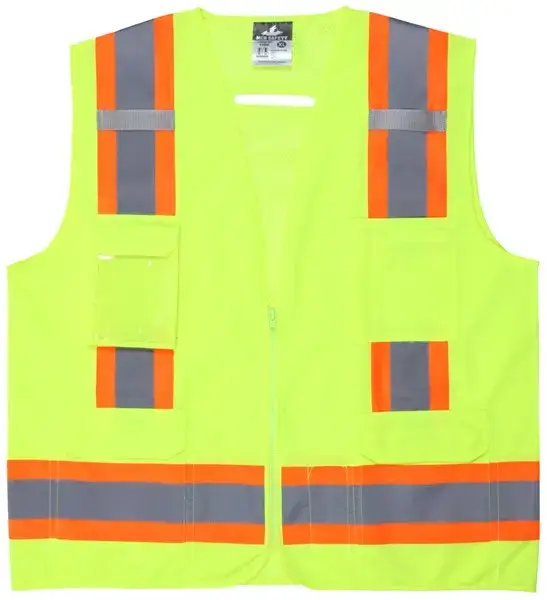
5. Comparison and reference with other standards
In the international market, in addition to the ANSI/ISEA 107 standard, there are also high-visibility safety clothing standards in other countries and regions, such as the European EN ISO 20471 standard and the Chinese GB20653 standard. Comparing and referring to these standards will help to more comprehensively understand the similarities and differences in the requirements for the area of reflective materials, and provide a wider reference for the design and production of reflective safety vests.
(I) Comparison with the EN ISO 20471 standard
The EN ISO 20471 standard is a high-visibility safety clothing standard widely adopted in Europe. It has certain similarities with the ANSI/ISEA 107 standard in terms of the requirements for the area of reflective materials, but there are also some differences. For example, the area requirements for reflective materials in the EN ISO 20471 standard are usually measured in square meters, while the ANSI/ISEA 107 standard is measured in square inches. In terms of specific values, the requirements for the reflective material area of different grades of clothing are slightly different, reflecting the different emphasis and actual needs of safety protection in each region.
(II) Comparison with GB20653 standard
GB20653 standard is China's national standard for high-visibility warning clothing, and it also has clear provisions on the reflective material area. Compared with ANSI/ISEA 107 standard, GB20653 standard is different in the classification and specific requirements of reflective material area. For example, GB20653 standard combines the reflective material area with the grade and applicable scene of clothing, and stipulates the corresponding minimum use area of reflective material for Reflective Vests of different grades. Through comparison, it can be seen that the differences in the requirements for reflective material area in the standards of different countries and regions are mainly due to factors such as their respective safety concepts, industry practices and environmental characteristics.
6. The impact of reflective material area on actual application
The size of the reflective material area is directly related to the safety effect and practicality of reflective safety vests in actual applications. In actual work, the environment in which workers are located is complex and changeable, and factors such as lighting conditions, traffic flow, and weather conditions will affect their visibility. Therefore, ensuring that the reflective material area of the reflective safety vest meets the requirements of the ANSI/ISEA 107 standard is of great significance to protecting the lives of workers.
(I) Improving visibility and safety
Sufficient reflective material area can make workers more easily found in low-light or nighttime environments, thereby effectively reducing the probability of accidents such as traffic accidents. Especially in dangerous places such as highways and construction sites, the high visibility of reflective safety vests can provide additional safety protection for workers, reminding other people to pay attention to their presence and avoid potential dangers.
(II) Meeting the needs of different types of work
Reflective safety vests of different levels are suitable for different types of work environments. By reasonably selecting vests that meet the reflective material area requirements of the ANSI/ISEA 107 standard, the safety protection needs of various work scenarios can be met. For example, in areas with heavy traffic, workers need to wear level 3 warning clothing with a larger reflective material area and a stronger warning effect to ensure that they can be detected in a complex traffic environment.
(III) Improve the safety management level of enterprises
For enterprises, equipping employees with reflective safety vests that meet the ANSI/ISEA 107 standard is not only a reflection of fulfilling the responsibility of safe production, but also helps to improve the safety management level and image of the enterprise. By ensuring the safety of employees at work, enterprises can reduce the occurrence of work-related accidents, reduce economic losses and legal risks caused by safety accidents, and enhance employees' safety awareness and sense of belonging.
7. How to choose reflective safety vests that meet the ANSI/ISEA 107 standard
For international wholesale buyers and end users, it is very important to choose reflective safety vests that meet the ANSI/ISEA 107 standard. In the selection process, you can start from the following aspects:
(I) Check the product certification mark
Formal reflective safety vest manufacturers usually mark the corresponding certification mark on the product, such as the ANSI/ISEA 107 certification mark. When purchasing, buyers should carefully check the certification information on the product packaging or label to ensure that the product has passed the inspection and certification of the authoritative organization and meets the requirements of the standard.
(ii) Understand product specifications and parameters
Before purchasing, understand the specifications and parameters of the reflective safety vest in detail, including the area, color, strength, etc. of the reflective material, to ensure that it meets the actual work needs. At the same time, pay attention to whether the size and style of the product conform to the principles of ergonomics and whether it is suitable for employees to wear for a long time.
(iii) Choose a reputable supplier
Choosing a supplier with good reputation and reputation is the key to ensuring product quality. Before cooperating with a supplier, you can investigate and evaluate its production qualifications, quality control system, customer evaluation, etc. In addition, you can also check the product test reports and relevant certificates provided by the supplier to verify the compliance and reliability of its products.
(iv) Pay attention to the cost performance of the product
On the premise of meeting quality requirements, the cost performance of the product is also an important factor that buyers need to consider. Reflective safety vests of different brands and models may have large differences in price. Buyers can compare the prices and performance of products from different suppliers and choose products with high cost performance to reduce procurement costs while ensuring the quality and safety of the products.
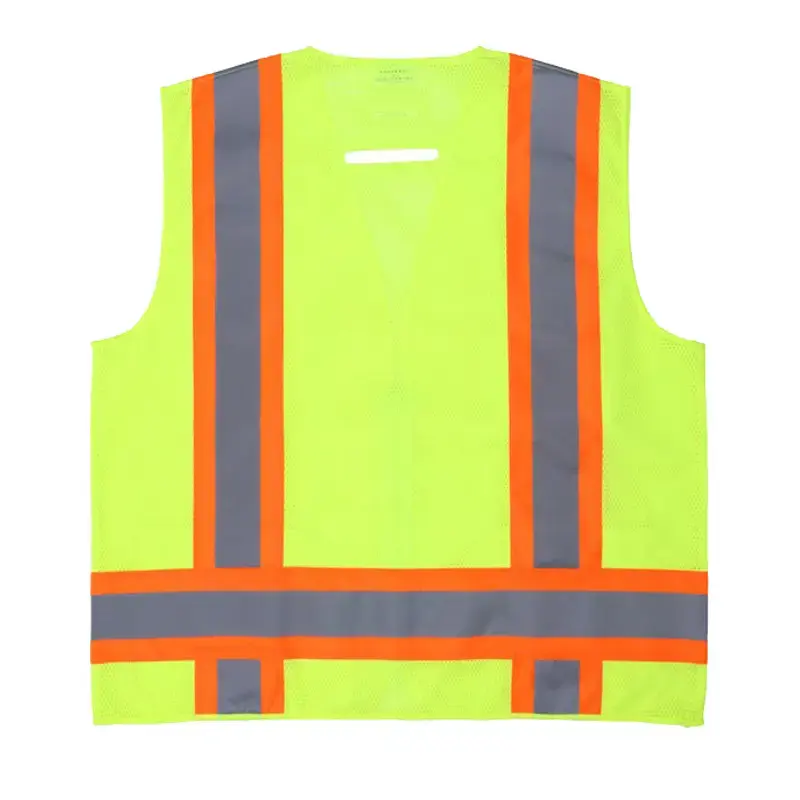
8. Conclusion
As an important international specification in the field of high-visibility safety clothing, the ANSI/ISEA 107 standard has detailed and strict regulations on the reflective material area requirements of reflective safety vests. By deeply analyzing the reflective material area requirements in this standard, we can clearly understand its importance and practical significance in ensuring the safety of workers. For manufacturers, wholesale buyers and end users of reflective safety vests, fully understanding and strictly abiding by this standard and choosing products that meet the requirements are the key to ensuring work safety, improving corporate safety management and reducing safety risks.
In practical applications, we should pay close attention to the updates and changes of the ANSI/ISEA 107 standard, and adjust the product design and production strategies in a timely manner to meet the evolving market needs and safety requirements. At the same time, we should strengthen the publicity and training on the correct use and maintenance of reflective safety vests, improve employees' safety awareness and self-protection ability, and jointly create a safer and more reliable working environment.

